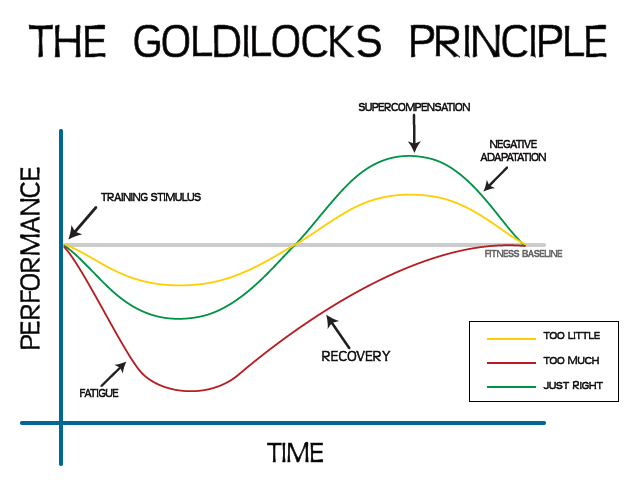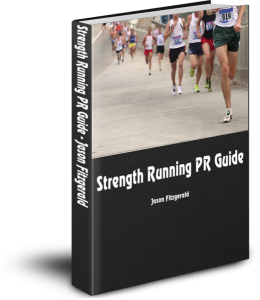I’ve coached so many different types of runners over the years:
- OCR athletes
- Beginners who have only run for 1-2 minutes
- 100-mile ultramarathoners
- regular folks getting ready for the FBI Fitness Test or the Army’s 2-mile run
- Boston Marathon Qualifiers (and hopefuls)
- Triathletes to hone their running skills
- 5k, 10k, HM, and marathon runners
- multi-stage ultramarathons in the desert
And the commonality among all of these runners is that they all ran at least one fast workout every week.
Sure, some of these runners didn’t start doing fast workouts for a few weeks (or even a month or two). And some workouts were orders of magnitude more challenging than others.
But nevertheless, they all ran a workout at least once per week. I consider it a training staple, much like long runs, strength exercises, strides, and short shorts.
I also think you should be doing one as well! It will be different depending on exactly who you are, your fitness level, goals, and injury background, but it’s still a key “ingredient” to sound training.
Today I’m going to answer three specific questions that were submitted by my email readers.
These questions are exerpts from the Strength Running PR Guide, a free ebook that you can download here.
The complete book has nearly 40 questions and answers that were submitted by SR readers.
#1 Should I wait to run fast until my mileage is higher?
First, let’s start with a question about fast running when the runner has only been doing easy mileage. Here’s the full question:
I’ve been doing mostly easy mileage. Should I be doing workouts and strength exercises? Or should I just keep adding miles until I reach my goal mileage, and then add in workouts?
A lot of runners are simply doing easy mileage – and there’s nothing intrinsically wrong with that if you run for fun or general fitness.
If you have racing goals, there is definitely a need for more structured workouts and strength exercises. Strength workouts (like lunges, the ITB Rehab Routine, or core work) enable your body to handle additional mileage and faster running, so I believe almost all runners should do some strength training 3-4 days per week.
If you have performance goals or want to get faster in a race, then harder workouts will help you get there. First start by doing 4-6 strides after your easy runs 1-2 times per week and then transition to 20-30″ surges during the end of your distance runs.
Once you’re comfortable running a little faster, the best workouts for beginners are fartleks. Fartleks are unstructured (or structured) pick-ups of varying length and effort during a distance run. My favorites are 5 x 1’ hard with 2’ recovery jog. But you can do anything. Keep them short, fun, but challenging.
You can add strides, strength workouts, and small increases in mileage all together, provided that you’re only making small changes to your program every week. Remember, consistency is king. Keep increases in volume and intensity modest and you’ll see big rewards later.
Further reading:
#2 Are faster workouts necessary for distance runners?
This question is about the half marathon and marathon races:
Do all runners have to do speedwork or tempos to get faster in the marathon and half marathon, or will steady distance runs suffice?
I think all runners can improve significantly in the half and full marathon with just distance running.
That improvement, however, will only last for a little while. Your body will adjust and you won’t see any further improvement so harder training is necessary. Faster running produces a lot of fitness benefits, including better efficiency and even injury prevention.
Classic interval workouts of 400m – mile repetitionss at 5k pace or faster don’t have as much place in a marathon program; however, tempo workouts can help almost every runner. They help you become more comfortable running faster, improve your body’s ability to utilize oxygen at faster speeds, and increase your endurance. Tempo runs are also not as demanding on your body as classic interval workouts, so they can be done twice a week.
On the opposite side of the spectrum of easy distance running there are sprints. And, contrary to what a lot of runners think, I believe sprinting is beneficial for every runner – even if you’re training for an ultramarathon. Sprinting at 99-100% of your maximum effort improves your stride efficiency, stride power, neuromuscular coordination, and when done on a steep hill can protect you from injury. You don’t need a lot and it shouldn’t be difficult, but short sprints are critical.
If you want to continue progressing, you start moving in toward the middle of the spectrum. Marathon pace tempo’s can become half-marathon pace tempo workouts. Strides and hill sprints can become fartlek workouts of a longer duration. Ultimately, you will need a variety of workouts to reach your potential in the marathon.
Further reading:
- The BQ Blueprint (free ebook)
- Hill Sprints
#3 How many hard workouts should I run?
Ah, the age-old question of how many hard days should be run in one week! Let’s take a look at the full question:
Is it better to do three hard runs per week and three easy ones? Or is better to run just four hard workouts per week?
The number of hard runs you do per week will vary based on your experience and fitness level. For highly trained runners who are running 7 days per week, three hard days is about the maximum that they should run. Adding more hard workouts won’t allow the body to recover and absorb the training.
This graph is a nice visual of how you need to allow for recovery after a hard session (and why working too hard is a bad idea):

For beginning and intermediate runners who are comfortable running 3-4 days per week, I recommend 1-2 hard workouts per week. Keep in mind that “hard” is a relative term and simply means a structured workout of faster running. Very few workouts in a long training cycle should be maximum efforts where you test what you’re made of!
Especially for beginning runners, it’s important to focus on the basics: easy mileage to build the aerobic base (endurance) and short, easy sprints to work on mechanics, muscle fiber recruitment, and your comfort level with running very fast. Once you’re very comfortable with running at opposite ends of this spectrum, you can begin moving closer to the middle – prolonged, harder workouts.
Further reading:
Get the Full Book (35+ Q&A!)
The Strength Running PR Guide answers 37 questions about building mileage, workouts, strength exercises, running gear, improvement, and pacing strategies.
What makes this ebook unique is that it’s driven 100% by YOU and the specific concerns you have to your own running. I put a lot of work into making this guide and probably could charge for it – but I’m not. Since I asked all of you for your questions, it seems silly to charge you for the answers.
So here you are – free, personalized running advice. Once again, I want to thank all of the Strength Runners who helped make this ebook possible. It couldn’t have been done without your participation.
Your passion for running is why I continue to write the Strength Running blog.
Click here to download it now.
Enjoy 🙂